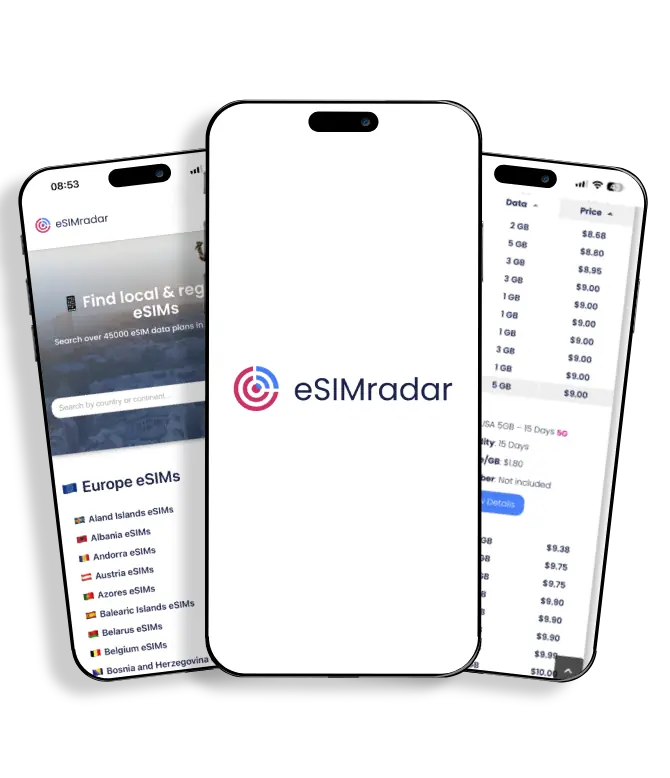All of the products and services we feature are chosen independently. If you click through links we provide, we may earn a commission. Learn more
Written by: Emily Chen
What Does Roaming Mean
- Updated: September 30, 2023 | Published:
In the era of global connectivity, understanding the concept of roaming is crucial for anyone using a mobile device. Roaming ensures that you stay connected, whether you’re traveling to a neighboring city or across international borders.
However, this convenience often comes with additional costs and considerations. This comprehensive guide delves into the world of roaming, explaining what it is, how it works, the costs involved, and how to manage it effectively.

What is Roaming?
Roaming is a term used in wireless telecommunication that indicates a mobile device is outside the geographical coverage area of its home network and has connected to a different, available cell network.
The process happens seamlessly and allows the device to access the internet, make and receive calls, or send and receive text messages.
How Does Roaming Work?
Roaming becomes possible through extensive inter-operator telecommunications networks that allow mobile devices to connect to the most suitable available network automatically. This connection happens when a device moves out of its home network’s coverage area or if the home network signal is weak or unavailable.
The ability to roam, especially internationally, is facilitated by agreements between network operators. These agreements allow subscribers of one service provider to use their mobile devices on another provider’s network, often at additional costs.
Types of Roaming
Domestic Roaming
International Roaming
Roaming Charges
Roaming charges are additional costs that a subscriber incurs when using their mobile device outside their home network’s coverage area. These charges are typically higher than the costs of using the device within the home network and can significantly increase the cost of a mobile phone bill, especially for international roaming.
Domestic Roaming Costs
In many countries, domestic roaming charges have been largely eliminated due to nationwide coverage provided by most carriers. However, in some cases, especially in larger countries or those with rural areas that a single carrier doesn’t cover, domestic roaming charges may still apply.
When domestic roaming charges do apply, they are typically less than international roaming charges. They might include:
- Per-minute charges for calls: You may be charged a certain rate for every minute you spend on a call while roaming.
- Per-message charges for texts: Similar to call charges, you may be charged for every text message sent or received while roaming.
- Data charges: You may be charged for the data you use while roaming. This could be a flat rate per day or a rate per megabyte of data.
International Roaming Costs
International roaming costs are typically higher than domestic roaming costs and can add up quickly.
They might include:
- Per-minute charges for calls: International roaming rates for calls are typically much higher than domestic rates. These charges apply to both calls made and received.
- Per-message charges for texts: You may be charged a higher rate for every text message sent or received while roaming internationally.
- Data charges: Data can be particularly expensive when roaming internationally. You may be charged a rate per megabyte, which can add up quickly if you’re using data-intensive services like video streaming.
- Daily access fee: Some carriers charge a daily access fee that allows you to use your domestic plan’s allowances in an international location.
It’s important to note that these costs can vary widely depending on your carrier and the specific international roaming plan you have. Some carriers offer plans that include international roaming or allow you to purchase add-ons that reduce the cost of roaming.
Before traveling, especially internationally, it’s a good idea to check with your carrier about the roaming charges you can expect. They can provide the most accurate and up-to-date information based on your specific plan and the places you’ll be visiting.
How to Avoid Roaming Charges
There are several strategies to avoid or minimize roaming charges:
- Use Wi-Fi: Whenever possible, connect to Wi-Fi to access the internet instead of using the mobile network. Many public places, such as hotels, restaurants, and airports, offer free Wi-Fi.
- Turn Off Data Roaming: Most smartphones allow you to turn off data roaming. This setting prevents your phone from connecting to the internet via the mobile network when you are outside your home network’s coverage area.
- Purchase a Roaming Plan: Many network providers offer roaming plans or add-ons that allow you to use your mobile device in other networks or countries for a fixed fee.
- Use a Local eSIM Card: If you are traveling internationally, consider purchasing a local eSIM card. This strategy allows you to access the local network at local rates, which are often cheaper than roaming charges.
Roaming and Network Compatibility
One question that often arises is the issue of network compatibility. Not all networks around the world use the same technology or frequencies, which can affect a device’s ability to roam.
The two primary types of networks are GSM (Global System for Mobile Communications) and CDMA (Code Division Multiple Access). While GSM is used worldwide, CDMA is less common and primarily used in the United States and a few other countries.
Most modern smartphones are designed to work on both GSM and CDMA networks and support a wide range of frequencies to maximize compatibility. However, if you have an older device or one that is locked to a specific network, you may encounter compatibility issues while roaming.
Roaming and Battery Life
Another concern with roaming is its impact on battery life. When a device is roaming, it may use more power as it constantly searches for and attempts to connect to a new network. This increased power usage can drain the battery faster than when the device is connected to the home network.
To mitigate this, users can turn off roaming when it’s not needed or switch to airplane mode and only enable Wi-Fi for connectivity.
Roaming and Data Security
Data security is another important consideration when roaming, especially when connecting to public Wi-Fi networks. These networks are often unsecured, making it easier for malicious actors to intercept data.
To protect sensitive information, it’s recommended to use a virtual private network (VPN) when accessing the internet via public Wi-Fi. A VPN encrypts data, making it much harder for anyone to steal information.
By entering your email & signing up, you agree to receive promotional emails on eSIMs and insider tips. You can unsubscribe or withdraw your consent at any time.

About The Author
Spread the Word, Share the Joy
Compare eSIMs
Why keep the secret to yourself? Spread the joy of eSIMradar and let everyone in on the eSIM experience!
Easy eSIM Comparison for Your Needs
Simplifying your search! Easily compare eSIM plans tailored to your specific needs
Coverage in 210+ Countries
Benefit from our extensive eSIM comparison with 30+ providers in over 210 destinations.
Save money without second-guessing
Our platform helps you maximize value, ensuring competitive prices.
Enjoy Hassle-Free Travel Abroad
Whether you’re on holiday or a business trip abroad, stay connected with ease and focus on enjoying your experiences,
Find Your Perfect eSIM & Exclusive Deals!
Find your ideal eSIM effortlessly and stay connected in style wherever your adventures take you! Get exclusive deals and discounts at your fingertips, ensuring you get connected for less on your travels!











